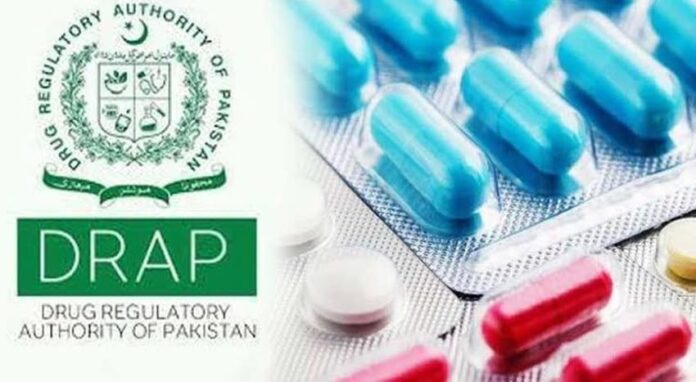One of the first things Dr Nadeem Jan, the new caretaker federal health minister, has done after coming to power, is take notice of the age-old prevalent health crisis in Pakistan: the artificial shortage of drugs. In a meeting on 22 August 2023, Jan, Secretary Health Iftikhar Shallwani and Additional Secretary Kamran Rehman, were briefed by the DRAP CEO Asim Rauf. He explained the challenges faced by the association and vowed to come up with a comprehensive and integrated strategy to not only improve DRAP’s efficiency as a regulator but also double the export of medicines from Pakistan, which is currently worth $713 million.
Nadeem Jan directed Rauf to take all necessary measures to deal with the artificial shortage crisis and to coordinate a nation-wide strategy to deal with the sale of unregistered or fake medicines. It was also decided that DRAP will launch a mobile application where citizens and retailers are able to report drug shortages by geo-tagging and subsequently DRAP will then be able to address the issue.
In June 2023, an officer DRAP wrote to the Secretary Health alleging that the CEO, Asim Rauf was running a Benami pharmaceutical company. According to an explanation letter, reported by Dawn, the Ministry of National Health Services (NHS) recently sought an explanation from Asim Rauf over misuse of power and serious violations of SOPs leading to gross irregularities. The Federal Investigation Agency (FIA) also sent Rauf 24 questions regarding his alleged benami pharmaceutical company, M/s Zeta Pharma. This is in line with a letter written to the Secretary Health by a DRAP employee, detailing a number of issues of misconduct by Asim Rauf since his appointment in 2002.
Although the DRAP chief assured the newspaper that these are frivolous accusations, it casts a serious doubt on his ability to execute promises made to the new caretaker health minister.
A brief history of artificial drug shortages
Last year when the Pakistani market experienced a dearth of panadol – the most staple over-the-counter drug used in households all over the country. Although it is not a life-saving drug, the frequency of its use case made this an issue that was highlighted in the media. In this case, the federal health minister for NHS Abdul Qadir Patel openly blamed pharmaceutical companies for hoarding the drug and forcing DRAP to jack up prices beyond the mandatory 15% pricing increment for medicines. Later, packed cartons of millions of tablets were recovered from a company’s warehouse, in an illegal raid.
This is a perfect example to epitomize the crisis of artificial drug shortages. It is a history of an endless tussle between big pharma and the regulators. One blames the other for not allowing allegedly legitimate price increases and the other accuses them of hoarding medicine and creating an artificial supply problem.
In November and December 2022, again, the Pakistani market faced shortage of painkillers, insulin, eye drops, paracetamol and its variations. However, retailers and traders while speaking to the media told the media that taking advantage of the shortage, the black market is thriving and selling the same medicines at more than double the price.
Come January 2023, with the non-opening of commercial letters of credit, this problem worsened and a dangerous lack of life-saving medication was experienced nationwide. Even after the State Bank of Pakistan issued the notification for opening LCs for the most crucial sectors, banks refused to comply. In response the pharmaceutical companies recorded their protest and felt that they would be forced to suspend manufacturing.
On 7 February 2023, the Pharma Bureau, a representative body of multinational pharmaceutical companies, wrote a letter to the ministry of NHS requesting across-the-board price adjustment to deal with the increase in cost of production due to the devaluation of the rupee and the rising inflation. PB claimed that the cost of production has risen by 60% and the price of the product must reflect the same. Now this was definitely a difficult time for the pharmaceutical industry, as they had to jump several hurdles with regards to a deteriorating economy.
In March, the companies and the NHS entered a heated price dispute causing life-saving drugs to remain halted at the port, leading to an artificial shortage of supply in the market. The government rejected the companies’ demand for a 38% increase in price. The Pakistan Pharmaceutical Manufacturers Association (PPMA) also protested the government’s refusal to budge, citing the devaluation of the rupee and the rising cost of production. The PPMA went as far as threatening to shut down industry units resulting in a wide scale loss of employment.
On 16 August, DRAP forwarded a summary to the health ministry, seeking yet another increase in the price of medicines, however Abdul Qadir Patel, who was the health minister then, rejected this demand. More than a week later, on 24 August, DRAP fixed a maximum retail price of 25 life-saving drugs and has also proposed to pharma companies that they start importing most of their raw materials from China.
The prices of medicines in Pakistan are much higher compared to other countries in the region since most of them are imported from abroad. Considering this, it is difficult to imagine how Asim Rauf plans on “doubling” the export of pharmaceutical products.

























What a fantabulous post this has been. Never seen this kind of useful post. I am grateful to you and expect more number of posts like these. Thank you very much.
What are the main factors contributing to the artificial shortage of drugs in Pakistan, and how do these shortages affect the general population’s access to essential medications?
waw
Your website is really cool and this is a great inspiring article. Thank you so much.
Some translators specialize in specific fields, such as legal, medical, or technical translations. It’s important to choose a translator who is knowledgeable in the subject matter of the document.
Some translators specialize in specific fields, such as legal, medical, or technical translations. It’s important to choose a translator who is knowledgeable in the subject matter of the document.